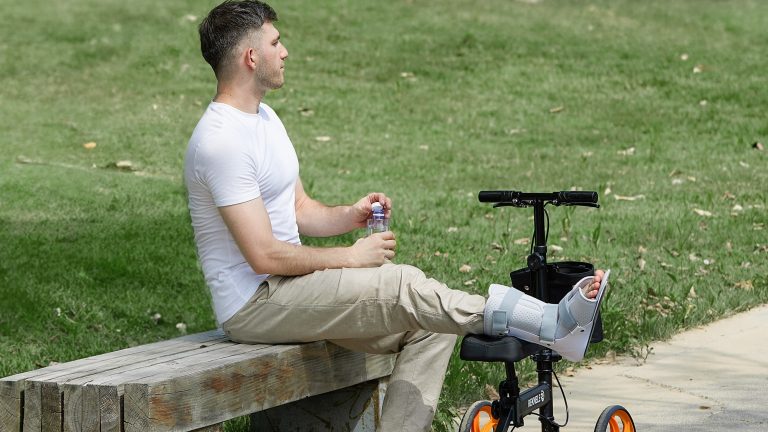Knee scooters, also known as knee walkers or medical scooters, are a lifesaver for a lot of people dealing with foot, ankle, or lower leg injuries. They let you stay mobile without the hassle of crutches, which, let’s be honest, can be a total pain. But while knee scooters are great for many, they’re not for everyone. If you’re thinking about getting one, it’s important to know whether it’s actually the right choice for you.
Who Should Avoid Knee Scooters?
People With Poor Balance
If you struggle to stay steady on your feet, knee scooters might not be your best option. These devices require some balance and coordination, and if you’re prone to falls, you could end up making things worse instead of better. Medical scooters might feel sturdy, but they still require control—especially when turning or stopping.
Those With Injuries on Both Legs
Knee scooters work by letting you rest one leg while pushing with the other. If you’ve injured both legs, this just won’t work. Crutches, a wheelchair, or other mobility aids would be better suited in this situation.
People With Knee, Hip, or Back Problems
To use a knee scooter, you need to be able to comfortably bend one knee at about a 90-degree angle and rest it on the padded seat. If you have knee pain, arthritis, hip issues, or lower back problems, keeping your knee on scooters for long periods might actually cause more discomfort.
Elderly Individuals With Limited Strength or Mobility
Older adults who have trouble walking or who don’t have the upper body strength to steer and stop safely may find knee walkers more challenging than helpful. A device like an Elenker walker or a traditional rollator may provide more stability and ease of use.
People Using It on Rough Terrain
If you live in an area with lots of uneven sidewalks, gravel, or grassy areas, knee scooters might not be the best idea. They work best on smooth surfaces, and bumpy terrain can make them harder to control. In some cases, you might find yourself stuck or at risk of tipping over.
Anyone Who Can’t Support Themselves on One Leg
Since you have to push yourself forward with your good leg, you need enough strength and endurance in that leg. If you’re dealing with weakness, pain, or another condition that makes it difficult to bear weight on one side, a medical scooter could be more frustrating than helpful.
People Recovering From Certain Surgeries
If you’ve had surgery that affects your balance, coordination, or strength—such as back surgery, knee replacement, or anything involving your upper body—you might not want to use a knee scooter right away. Always check with your doctor to make sure it’s a safe option for you.
What Are the Alternatives?
If you fall into any of the categories above, don’t worry—there are other mobility aids that might work better for you:
- Crutches: Not always fun, but they work for short-term use.
- Wheelchairs: A great option if you can’t put weight on either leg.
- Elenker Walker or Rollator: If you need extra stability but still want some mobility.
Knee scooters are fantastic for the right person, but they’re not a one-size-fits-all solution. If you’re unsure whether they’re a good fit for you, talk to your doctor or physical therapist. The last thing you want is to trade one problem for another! Whatever you choose, make sure it helps you move around safely and comfortably so you can focus on healing.
